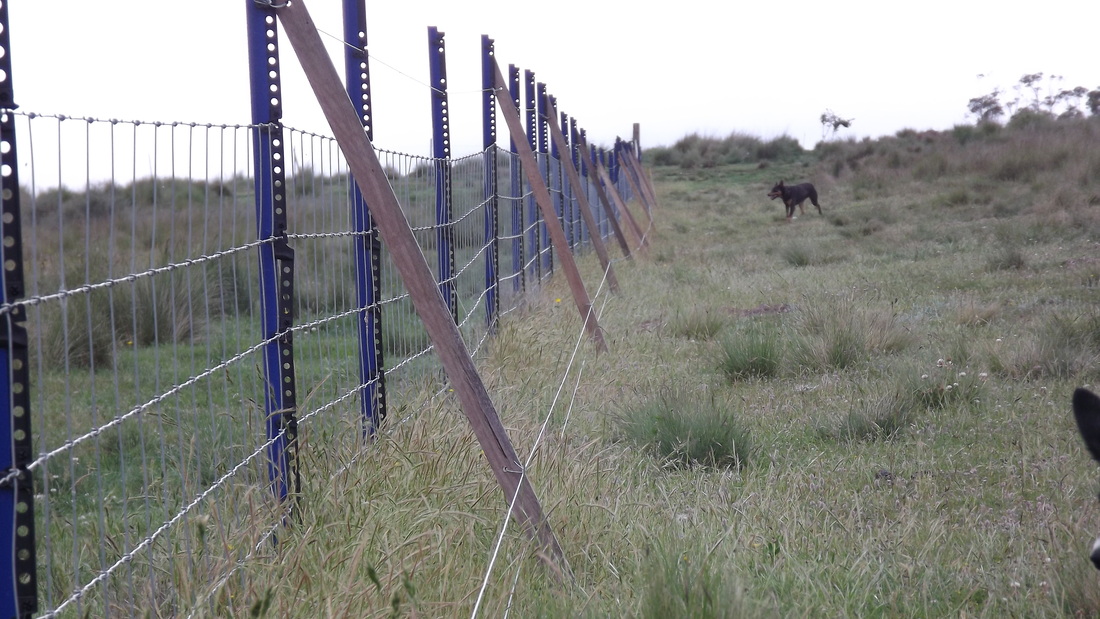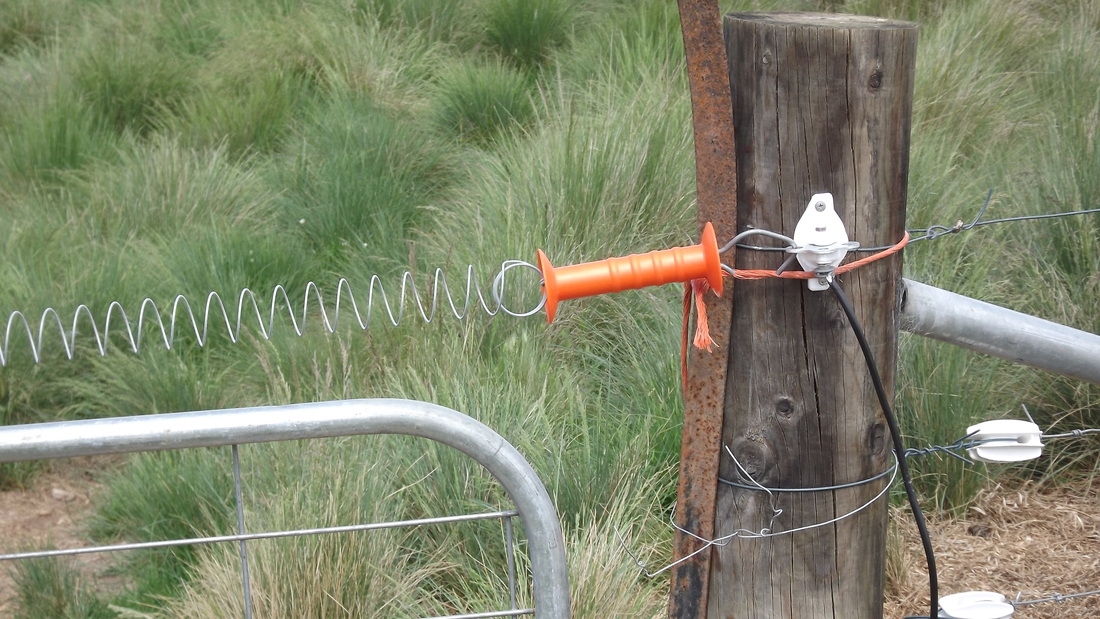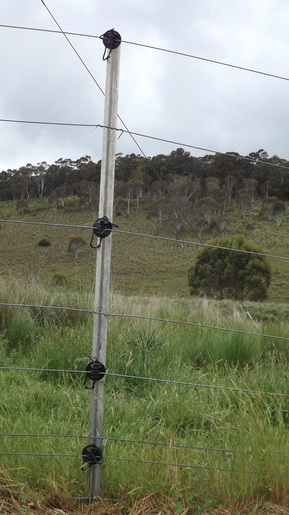The thoughts behind this fence were that we needed to slow the foxes' passage through the fence so that ideally, it would receive at least two electric pulses.
The problem is always exacerbated by undulating country, so post spacings are determined by the terrain. The basic structure is an electrified hingejoint/ringlock fence and a secondary offset electrified wire and earth. We used a special steel post called "cliplock ", which have an insulated plastic insert along one side that is designed to work as an insulator and holder for the hingejoint. The hingejoint is strained and just clipped into the holders on the post. While the design idea of these post is excellent we have found the quality to be very poor and the plastic insert breaks easily and does not exactly fit the wire spacings on the hingejoint. We have since been told of another post "Fibopost XT", (www.sammindustries.com.au) that is a conventional starpost design, made out of a recycled material that doesn't conduct electricity and is very strong. This could be a sturdier, cheaper option. The offset wires were run out using wooden ironbark droppers (drilled to take the tie wires), though a cut down Fibopost would work.The dropper is attached to an earth wire at the top.
The bottom wire is live and 20 cm above the ground and 30 cm out from the hingejoint, the wire above is an earth and about 20 cm above the live. We felt that this setup would work best with the very uneven ground where the lambing paddock is sited. We had the challenge of locating the paddock where there would be plenty of shelter for the lambing ewes as well as being possible to fence.
The problem is always exacerbated by undulating country, so post spacings are determined by the terrain. The basic structure is an electrified hingejoint/ringlock fence and a secondary offset electrified wire and earth. We used a special steel post called "cliplock ", which have an insulated plastic insert along one side that is designed to work as an insulator and holder for the hingejoint. The hingejoint is strained and just clipped into the holders on the post. While the design idea of these post is excellent we have found the quality to be very poor and the plastic insert breaks easily and does not exactly fit the wire spacings on the hingejoint. We have since been told of another post "Fibopost XT", (www.sammindustries.com.au) that is a conventional starpost design, made out of a recycled material that doesn't conduct electricity and is very strong. This could be a sturdier, cheaper option. The offset wires were run out using wooden ironbark droppers (drilled to take the tie wires), though a cut down Fibopost would work.The dropper is attached to an earth wire at the top.
The bottom wire is live and 20 cm above the ground and 30 cm out from the hingejoint, the wire above is an earth and about 20 cm above the live. We felt that this setup would work best with the very uneven ground where the lambing paddock is sited. We had the challenge of locating the paddock where there would be plenty of shelter for the lambing ewes as well as being possible to fence.
The gateway has also received special attention, with the gate being swung very low so nothing can go under it, and along the top we placed a spring electric gate wire, to discourage anything climbing over. This same spring gate could be used at the bottom of the gate as well if there was a gap.
We found this fence to be very effective, we didn't lose any lambs from this area, and stillborn lambs were left untouched.(Except by crows)



 RSS Feed
RSS Feed